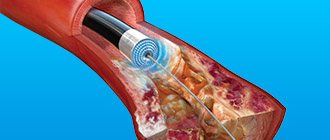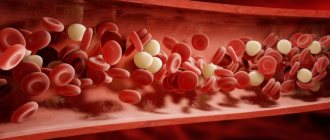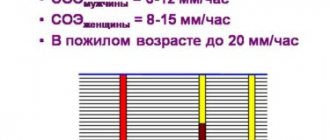Arterial hypertension rightfully ranks as one of the most common diseases on the planet. Often, hypertension leads to dangerous complications, such as heart attack or stroke. The course of arterial hypertension often takes an insidious chronic form.
So at what pressure is sick leave given? The diagnosis of arterial hypertension is considered confirmed if the patient’s blood pressure increases to one hundred forty to ninety millimeters of mercury or higher within several days. If you independently detect high blood pressure, you must immediately contact a specialist to obtain a sick leave certificate and further examination.
In severe cases, a patient with a hypertensive crisis is admitted to the hospital and is required to be given a sick leave certificate.
Why do you need sick leave and who issues it?
A sick leave form is a strict reporting form documenting the absence of an employee from the workplace due to illness.
If an employee gets sick and does not provide a certificate of incapacity for work, this is equated to absenteeism. Additionally, sick leave secures the possibility of receiving temporary disability benefits. The form is the same, it does not change depending on the type of disease and the reason for visiting a doctor. The formal form of the document was approved by Order of the Ministry of Health and Social Development No. 347n dated April 26, 2011. Who issues and what is the minimum period of sick leave, the procedure for applying the temporary disability certificate is regulated by the following regulations:
- Labor Code (Articles 124, 138 of the Labor Code of the Russian Federation);
- Tax Code (Articles 217, 255 of the Tax Code of the Russian Federation);
- 255-FZ of December 29, 2006 (compulsory social insurance of temporary disability);
- 323-FZ dated November 21, 2011 (payment of BL by social insurance authorities);
- RF PP No. 375 dated June 15, 2007 (calculation of compensation);
- RF PP No. 2375 dated December 30, 2020 (direct payments);
- Order of the Ministry of Health No. 925n dated 09/01/2020.
The issuance procedure is fixed in Order No. 925n. It is issued only by those persons who have a special license for medical activities and examination services. It is completed either by attending physicians at medical institutions or by doctors at clinics at research institutes. Both paramedics and dentists of medical institutions have the right to issue certificates of incapacity for work. Prepared on paper or electronically.
More details: how to obtain consent for an electronic certificate of incapacity for work.
Sick leave is not always issued only in accordance with the disease. It is also issued for pregnancy and childbirth at the 30th week of pregnancy to receive financial compensation. They are issued not only due to illness, but also when it is necessary to care for a sick family member: a sick child, a close relative.
Like any other strict reporting form, the certificate of incapacity for work is filled out according to the regulations approved by law. If an error has crept into the document, it is corrected correctly.
Read more: how to correctly make corrections to a sick leave certificate.
The benefit is calculated based on average earnings for the two years preceding the billing period. Payment for sick leave directly depends on length of service:
- less than six months - calculated from the minimum wage (minimum wage);
- from 3 to 5 years - 60% of the calculated amount will be paid;
- from 5 to 8 years - 80% compensated;
- 8 years or more - temporary disability benefits are paid in full (100%).
ConsultantPlus experts figured out how to calculate and pay sick leave in 2021. Use these instructions for free.
to read.
Minimum term
Legislative acts do not establish a minimum number of days of sick leave. The period of incapacity for work is determined only by the attending physician, based on the characteristics of the disease and the current condition of the patient. The exact number of days directly depends on the patient’s well-being and the period of necessary rehabilitation. The following rehabilitation conditions are distinguished:
- outpatient;
- day hospital;
- hospital
Often the minimum rehabilitation period, determined by the attending physician, is 3 days. If the patient is provided with outpatient treatment, then a certificate of temporary incapacity for work is issued for 15 days. If necessary and with the consent of the medical advisory commission, it is extended.
Maximum duration
The Order of the Ministry of Health No. 925n dated September 1, 2020 stipulates how many days the maximum sick leave is - 15 (clause 19 of Order No. 925n). This period can be extended only on the basis of a decision of the medical advisory commission (MCC). Special deadlines are provided for paramedics and dentists; for them the maximum is 10 days.
If treatment is carried out in a hospital setting, then everything depends on the patient’s condition, diagnosis and the presence of complications in the patient. The maximum duration in inpatient conditions is not defined by law. The attending physician determines how long sick leave is issued - incapacity for work is issued for the entire period of the employee’s stay in the hospital. By decision of the medical commission, the certificate of incapacity for work is extended until the day of restoration of working capacity with the frequency of extension, by decision of the medical commission, at least every 15 calendar days, but for a period that does not exceed 10 months from the date of the onset of temporary incapacity for work, after injuries and reconstructive operations (clause 21 of Order No. 925n). When treating tuberculosis, the extension period does not exceed 12 months.
Similar requirements are provided for when treating an employee in a day hospital. The duration is determined directly by the attending physician, depending on the patient’s condition and the type of disease.
Disability group
The degree of disability due to hypertension is assessed by a group of experts.
The commission of doctors may reject the request if it considers that the treatment has not yet been completed.
A number of circumstances are taken into account:
- degree of disease progression;
- presence/absence of target organ damage;
- reversibility of complications;
- frequency of hypertensive crises and severity of their course;
- accompanying illnesses;
- effectiveness of therapy;
- labor orientation;
- contraindications by type and working conditions.
Disability groups are assigned according to the following parameters:
| Disability group | Conditions of assignment |
| Group I |
|
| Group II |
|
| III group |
|
Contraindications by type and working conditions
If you are diagnosed with hypertension, it is not recommended to engage in professional activities associated with:
- frequent stress;
- lifting weights;
- production where the temperature is high, there is a lot of noise or vibration;
- production where it is necessary to come into contact with pesticides;
- night shifts.
For hypertensive patients with stage II of the disease, physical labor is contraindicated if vascular lesions of the heart predominate.
When diagnosing vascular lesions of the brain, doctors strongly advise not to engage in work that involves mental stress and constant stress. Author of the article Svetlana Anatolyevna Ivanova, general practitioner
Table of diseases with deadlines
The exact duration is determined only by the attending physician, based on the diagnosis, the course of the individual patient’s disease, the effectiveness of treatment and many other factors. We have prepared a table of the duration of sick leave for diseases in 2021 (instructions of the Ministry of Health No. 2510/9362-34 dated 08/21/2000).
| Medical indication | Minimum period, days | Maximum period, days |
| ARVI | 5 | 15 |
| Angina | 10 | 15 |
| Trauma - fracture of the limbs (depending on complications, presence of displacements) | 30 | 60 |
| Spinal injury (depending on the presence of displacements and the part of the spine) | 60 | 240 or more |
| Concussion - mild | 20 | 28 |
| Concussion - moderate | 1 month | 2 months |
| Concussion - severe | 2 months | 4 or more months |
| Oncology (depending on stage) | 4 months | 6 months |
| Tuberculosis (infiltration phase with small and medium foci) | 4 months | 6 months |
| Tuberculosis (other cases) | 8 months | 10 months |
| Chickenpox | 10 | 21 |
| Removal of appendicitis (depending on type) | 16 | 21 |
| Removal of a tooth | 3 | 10 |
| Removal of the gallbladder (entire hospital stay) | 48 | 55 |
| Gallbladder removal - home rehabilitation | Up to 10 days | |
| Caring for a sick child under 7 years old | Issued for the entire period of treatment | |
| Caring for a sick child 7–15 years old | Up to 15 days | |
| Caring for a sick child over 15 years of age | Up to 7 days | |
| Singleton pregnancy without complications | 140 days | |
| Pregnancy with complications or childbirth between 22 and 30 weeks | 156 days | |
| Multiple pregnancy | 194 days | |
What is hypertension
Hypertension is a more common pathology. It affects about a third of people on our planet. Therefore, doctors pay special attention to her.
With hypertension, a number of complex processes occur in the body. As a result of their influence, blood vessels narrow, the heart rate increases, the blood thickens and blood circulation slows down. This leads to the fact that the organs begin to be less supplied with oxygen, which is why various pathologies begin to develop in them.
Hypertension leads to serious illnesses. Moreover, complications of this pathology claim more than a dozen lives every year.
The most common complications that pose a threat to life and are considered a consequence of hypertension are: myocardial infarction, stroke and hypertensive crisis. Also, the long course of this disease leads to kidney and heart failure, atherosclerosis, liver problems and many other diseases.
If you have hypertension, it is very important to undergo a timely examination and normalize the condition in a timely manner. This will help avoid serious complications and get rid of the problem.
Hypertension is hard to miss. It causes the patient severe discomfort, which is expressed in a host of unpleasant symptoms.
Hypertension can be caused by both hereditary predisposition and concomitant pathologies. Moreover, primary hypertension is no less dangerous than secondary hypertension. After all, it itself can become the cause of various pathologies.
The secondary form of hypertension is a consequence of various diseases. These can be a variety of pathologies. However, most often this problem is caused by diseases of the heart, kidneys and blood vessels. It can also be caused by hormonal imbalances and poor lifestyle choices.
There is a classical and hepatic form of hypertension. The second type is the most dangerous. It is a consequence of renal pathologies that lead to narrowing of blood vessels in them.
Renal hypertension is difficult to treat with medication. And the more advanced its stage, the more difficult it will be to save the kidney.
For how long is sick leave issued in case of quarantine and epidemic?
The period of the certificate of incapacity for work depends on the medical history, diagnosis and condition of the patient - from 3 to 15 days. To extend for a longer period, you will need the approval of the head physician or medical council. This rule applies to all diseases with complications. What should an employee do in the event of an epidemic or forced quarantine due to coronavirus?
Rospotrebnadzor determined how many days the minimum sick leave for coronavirus is 14 days until complete recovery (Decree No. 15 of May 22, 2020). Citizens infected with coronavirus are discharged with permission to begin work duties after receiving one negative test for COVID-19. If a positive test is obtained during the control, the patient will be discharged only after receiving a second negative result. A repeat test will be done no earlier than after 3 days (RPN Decree No. 35 of November 13, 2020).
Citizens who have been in contact with a coronavirus patient are required to remain in isolation or observation for 14 days. If during this period they do not show COVID symptoms, their sick leave will be closed and they will be allowed to start work. If the contact person falls ill, he will be given a certificate of incapacity for work at the moment of complete recovery, after receiving a negative test.
Hypotension - what is it?
Hypotension is a disease in which blood pressure values fall below 100/60. In this case, the person experiences severe discomfort.
Hypotension can be observed either once or continuously. In the first case, this is only a temporary phenomenon, and in the second, it is a serious pathology.
This disease can be primary or secondary. In the first case, it is a consequence of heredity predisposing to this, and in the second, it occurs under the influence of serious diseases. In this case, hypotension is often their only symptom.
Causes of hypotension:
- Neurocircular dystonia. This pathology represents a whole complex of cardiovascular disorders.
- Constant stress and depression can also lead to this condition.
- Excessive stress on the body, exhausting diets, lack of sleep or oversleeping also lead to chronically low blood pressure.
- Stomach ulcers and gastritis are two other causes of hypotension. Gastric resection can also lead to this pathology.
- The risk group also includes people suffering from heart pathologies. Such diseases include tachycardia, arrhythmia, heart failure, myocarditis, cardiomyopathy.
- Diabetes mellitus can cause problems in the functioning of the peripheral nervous system, which causes hypotension.
- Hypothyroidism.
- Acute courses of various infectious diseases. This also includes colds.
- Tumors of different etiologies.
- Some diseases of the musculoskeletal system.
- Poisoning, bleeding and dehydration. This can also include vitamin deficiency.
These diseases are dangerous in themselves. Therefore, if persistent hypotension occurs, it is necessary to consult a specialist to diagnose the problem that is causing this condition.
As pressure decreases, vascular resistance weakens, heart rate decreases, the amount of blood circulating in the body decreases, and the blood begins to be less well supplied with oxygen. This leads to deterioration in the functioning of all organs.
A patient with hypotension will experience severe discomfort. It will be expressed in dizziness, loss of strength, drowsiness, headaches, decreased heart rate, fainting, loss of stability, as well as vision problems. In some cases, fainting may even occur.
How and when is it paid?
The procedure for paying for sick leave is given in Art. 13 255-FZ. The first three days of illness are the deadlines for payment of sick leave by the employer in 2021, the rest of the period is paid by the territorial bodies of the Social Insurance Fund.
The procedure for accruing and paying sick leave in an organization is as follows: the reinstated employee provides the accounting department with a form documenting temporary disability, the accountant checks it for correct completion, and then makes all the necessary calculations and accruals.
More details: how to fill out a sick leave certificate: step-by-step instructions for the employer.
IMPORTANT!
From January 1, 2021, a system of direct payments will be introduced everywhere in the Russian Federation. This means that the Social Insurance Fund fully pays for its part of the certificate of incapacity for work, without compensation or offsets to the policyholder. RF PP No. 2375 dated December 30, 2020 indicates how many days of sick leave the employer pays in 2021 - still 3 days. The exception is disability due to pregnancy and childbirth, quarantine, caring for a sick family member and a number of other insurance cases - these sick leaves are paid entirely by the Social Insurance Fund.
The employer pays his part of the certificate of incapacity for work on the next day of payment of income at the institution (salary or advance payment). The FSS transfers money within 10 calendar days after the policyholder submits all the necessary documents for sick leave (Article 15 255-FZ).
How many times a year are you allowed to take sick leave?
There are no legal restrictions on the issuance of sick leave per patient per year. The employee takes as many times as he needs for treatment and recovery.
IMPORTANT!
The maximum duration of a certificate of incapacity for work in case of illness of the employee himself is 12 months. The duration of payment of benefits in case of illness or injury of the employee himself is not limited. All days of sick leave are paid, regardless of how long it was issued and how many sick days the employee has during the year (Part 1, Article 6 of Law No. 255-FZ). An exception is benefits for disabled people and workers on fixed-term contracts.
During the year, the maximum duration of payment of temporary disability benefits is a total of 5 months, but not more than 4 months in a row (Part 3 of Article 6 255-FZ).
If an employee is injured at work or has an occupational disease, the actual number of sick days is not taken into account, and the patient extends sick leave for as long as he needs until he fully recovers.
The exceptions are sick leave for pregnancy and childbirth, since they have fixed periods, and temporary disability, for which leaves are issued for 12 months. They are issued in the following cases:
- injuries with a long recovery period;
- tuberculosis;
- periods of rehabilitation after operations.
Special rules apply to certificates of incapacity for work issued for child care. For example, the duration of sick days for payment is limited by annual limits. There are other restrictions on payment of benefits, they are collected in the table:
| Reason for temporary disability | Duration of payment of insurance benefits | Legislative norm under 255-FZ |
Illness or injury of an employee:
| The entire period of illness | Part 1 Art. 6 |
| Follow-up treatment for an employee in a Russian sanatorium after receiving medical care in a hospital setting (with the exception of tuberculosis) | No more than 24 calendar days | Part 2 Art. 6 |
| Prosthetics in a hospital according to medical standards. indications | The entire period of incapacity | part 7 art. 6 |
| All cases of illness of a disabled employee | No more than 4 months in a row or 5 months a year | Part 3 Art. 6 |
| Illness or injury of an employee working under an employment contract for up to 6 months | No more than 75 days of employment contract validity | Part 4 Art. 6 |
| Illness or injury of an employee from the moment the employment contract is concluded until the day of its cancellation | No more than 75 days of the employment contract, starting from the day the employee starts work | Part 4 Art. 6 |
| Caring for a sick family member (except a child) | No more than 7 days for each insured event and no more than 30 days per year in total | clause 6, part 5, art. 6 |
| Quarantine of an employee who has been in contact with an infectious patient | All the time that the employee does not work due to quarantine | part 6 art. 6 |
| Quarantine of a child under 7 years old who goes to kindergarten | ||
| Quarantine of an incapacitated family member |
Read more: how sick leave is paid for child care.
Criteria for temporary disability
Because high or low blood pressure causes different symptoms for each person, there are criteria doctors use to determine the degree of loss of function.
First degree
A doctor examining a patient with stage I hypertensive crisis is always guided by the following criteria:
- Headache.
- Feels very dizzy.
- Presence of tinnitus.
- The condition is close to fainting.
- Insomnia.
Such symptoms are observed in patients with readings above the working norm.
Second degree
The criteria for issuing a certificate of second degree disability are as follows:
- Nausea, sometimes turning into vomiting.
- Swelling of the face.
- Increased sweating.
- Constant fatigue, weakness, apathy.
- Numbness of fingers and toes.
This stage is also characterized by unpleasant sensations in the head, pain, and dizziness. There are problems with the blood vessels of the eyes.
Third degree
This degree of hypertension is the most dangerous for humans, as it often provokes a heart attack or stroke:
- When these values are high, the heart rhythm is disrupted.
- The person loses the ability to move independently.
- Speech problems arise.
- An unnecessary cough occurs in a damp room.
In the third degree of the disease, the risk of complications increases significantly, so the patient’s blood pressure is immediately reduced and sent to the hospital to normalize blood circulation.
Do I need to notify the employer?
Labor legislation does not stipulate the obligation of workers to warn management about illness. No such norm is specified in 255-FZ of December 29, 2006 on temporary disability. The employer does not have the right to force employees to provide mandatory notification of their absences from work due to illness. Reporting illness is exclusively the employee’s right, but in no case is it an obligation. But the employer has the right to prescribe such a condition in the internal labor regulations of the organization.
The employee conveys a warning about temporary disability both orally (directly to the manager or through colleagues) and in writing, by drawing up a notice addressed to the manager. The application is drawn up in free form, indicating the diagnosis and estimated duration of the illness.
Is it possible to get relief from work if you have high blood pressure?
Are people with high blood pressure given sick leave? – this question is asked especially often. Indeed, in this situation, the patient experiences such severe discomfort that it is almost impossible to work in its presence.
If the tonometer readings are high, an exemption sheet must be given. After all, hypertension most often leads to dangerous conditions for humans, including some serious complications that can even cause death.









